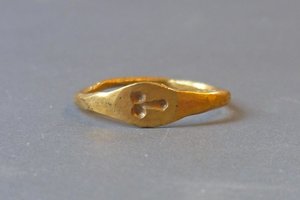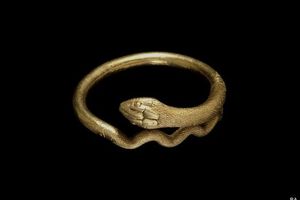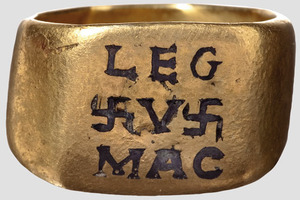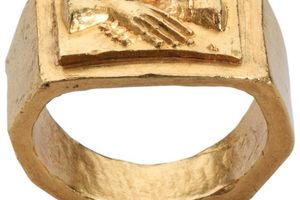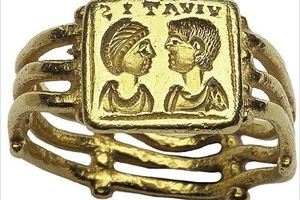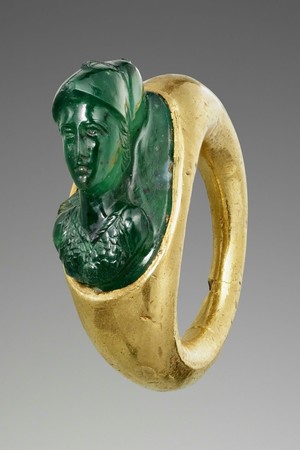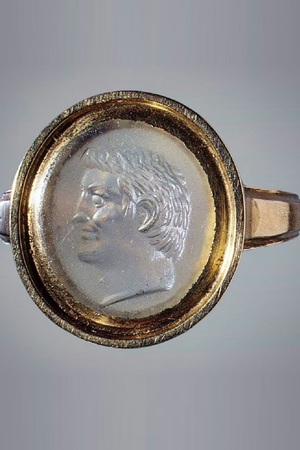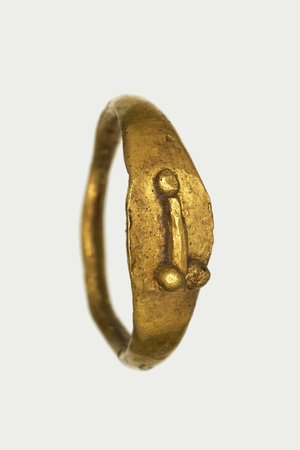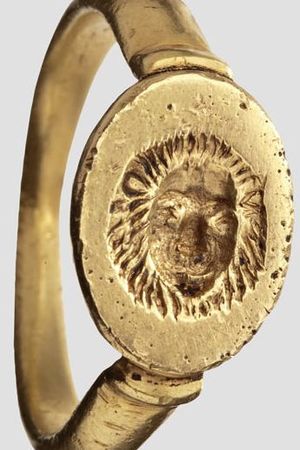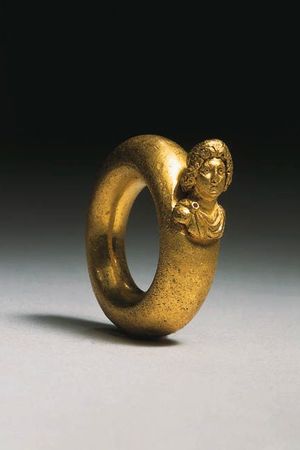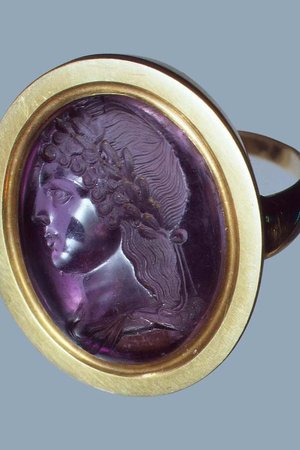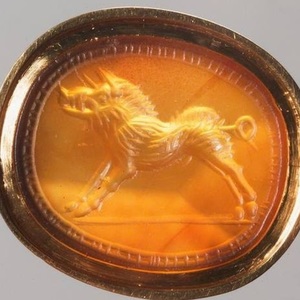Ring
Rings (Latin: anulus/anus/annus), worn on fingers, were widely spread in antiquity. Rings were either solid, cast from metal, or twisted from wire, the ends of which looped around the finger and did not connect with each other. The front part of the ring was often adorned with precious stones, engraving, enamel - jewelry art was beautifully developed. Rings were mainly made from bronze, silver, gold.
Jewelry, popular even today, existed all over the ancient world and were not a local attribute of a specific people. It is most likely that rings independently appeared in deep antiquity in many places on the planet.
Rings in Ancient Rome
In Ancient Rome, rings could be worn by representatives of all estates, both women and men. Archaeologists have found rings with the symbolism of various legions, which most likely belonged to the military. Often rings depicted mythological and domestic scenes. Many rings in the shape of snakes, as well as with the image of a phallus, which in Rome symbolized a huge number of phenomena - protection from the evil eye, attraction of luck, plea to send progeny, and much more, have survived to this day.
We can distinguish wedding rings, which were worn by spouses. As a rule, they depicted either a handshake, as a sign of understanding and harmony, or the faces of the couple themselves. The tradition of wedding rings has survived to our days.
Also, rings inlaid with semi-precious stones are distinguished, they are primarily characteristic of the Romans and Greeks. Stones decorated with carvings are called gems (Latin: gemma - precious stone). The art of stone carving has been developing since the IV millennium BC and became extremely popular in Ancient Greece (where it received the name of glyptics) and Ancient Rome by the 6th century BC.
Gems are of two types: intaglio, on which the pattern is created by depressions, as if scraped on the surface of the stone; and cameos, which is a voluminous convex bas-relief. Rings with intaglio stones could serve as seals.
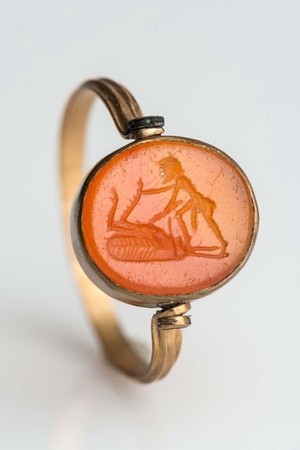 Ring with carnelian, intaglio. The carnelian depicts a pygmy. National Museum of Scotland. 1st century BC
Ring with carnelian, intaglio. The carnelian depicts a pygmy. National Museum of Scotland. 1st century BCRelated topics

 Gallery
Gallery






